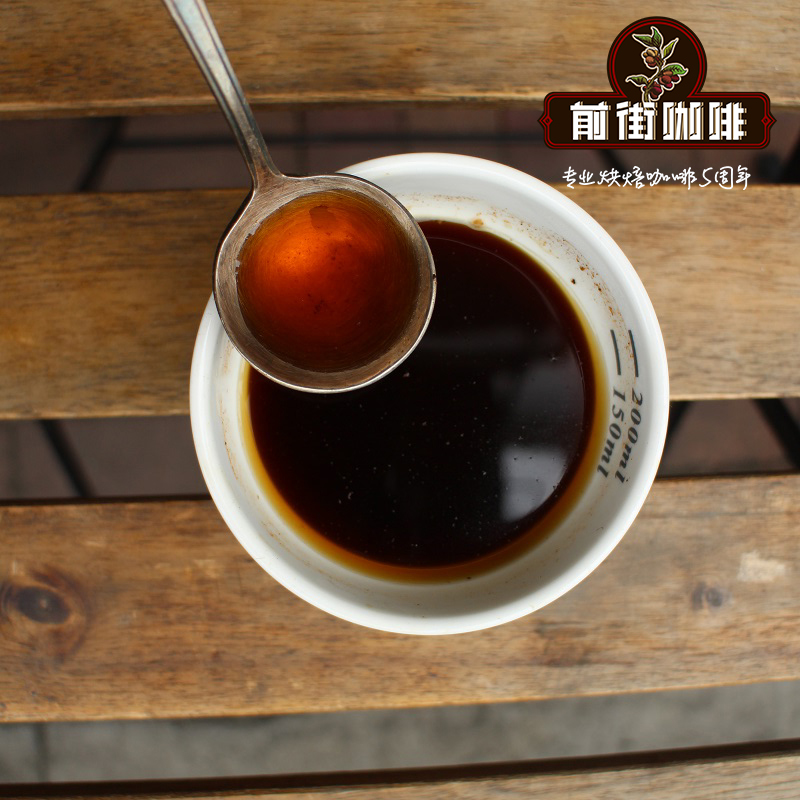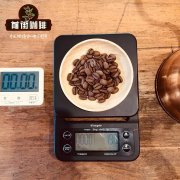SHB Honey treatment Flavor of La Jas Manor, Costa Rica | production area of Solar, Water washing and Honey treatment

Professional coffee knowledge exchange more coffee bean information please follow the coffee workshop (Wechat official account cafe_style)
Flavor of SHB Honey treatment in La Jas Manor, Costa Rica | what is the difference between solarization, washing and honey treatment?
Run by the Chac ó n family for three generations, Las Lajas Manor is a beautiful coffee farm with its own ecological treatment plant located on the fertile hills of the Poas volcano in the central valley. Since taking over in 1990, Francisca Cubillo Salas has invested in the establishment of nature conservation organic agriculture in a unique and innovative way, and in 2000 it has become one of the top officially certified coffee estates in Costa rica, and the high-quality coffee produced is also famous in the market. They believe that organic farming is a better choice for environmental protection and the health of their families, and they still adhere to this belief even in the face of many technical and organizational challenges. The establishment of a natural shaded manor by organic planting is a process that requires long-term investment, shaded by native trees; the planting process does not use chemical fertilizers and pesticides at all, but uses natural and homemade compost to increase crop nutrients and do a good job of soil and water conservation on the farm. It usually takes three to five years for this type of organic planting to be recognized as organic until the analysis of the soil, branches, leaves, and fruits does not see the listed chemicals. The manor only harvests coffee cherries that are fully ripe and of good quality, in order to save water resources, use a pulper to remove the pericarp, and place the peas with pectin on the so-called African scaffolding for sun exposure.
Keep the right amount of air circulation in the drying process to produce sweeter and cleaner coffee. The waste residue produced during the treatment process is recycled as pulp and fertilizer to maintain the natural balance of the ecological environment.
Flavor: honey, caramel, nut aroma, candied plum, candied fruit aroma, vanilla, wine aroma, rich finish.
Country: Costa Rica
Producing area: central valley
Rating: SHB
Producer: Lajas Manor
Treatment method: honey treatment method
Variety: Kaddura, Kaduai
Altitude: 1300 to 1500 m
Harvest time: December to February
There are three main ways to treat coffee: sun exposure, water washing and honey treatment. The sun drying method is to directly expose the coffee cherries before removing the shell and pectin layer; the water washing method is to screen the coffee pulp before exposure and ferment to remove the pectin layer; the honey treatment law is between the sun method and the water washing method: the pectin layer is directly retained and exposed after the coffee pulp is screened.
The word honey treatment makes many people think that coffee is treated with honey, or that coffee tastes as sweet as honey, but in fact it is not either of these two explanations. The meaning of honey treatment comes from the sticky pectin layer of coffee beans before exposure, which feels as sticky as honey; when the coffee pulp is separated from the coffee beans, the outer coated pectin layer is exposed to absorb moisture in the air and make the pectin layer sticky.
When the coffee is screened, the pectin layer will remain on the outside of the coffee bean. At first, some people saw that this treatment could continuously improve the quality of their coffee beans, and it originated in Costa Rica, and this treatment is now ramming.
So why did Costa Rican coffee farmers plan to treat it with honey in the first place? When coffee farmers want to improve the quality or price of their coffee, they have three choices: change the species of coffee, change the altitude of planting, and change the method of treatment. Just like most people who brew coffee, they will want to use relatively simple ways, such as adjusting the grinding scale and the amount of powder, and then adjusting the amount of water, pressure and temperature of the coffee machine. Most coffee farmers also want to change the treatment method first. Then they will consider planting new tree species or moving the manor, which requires investment of time and money.
Honey treatment takes time, and the construction method is exquisite: honey treatment is not simple, it takes a long time to deal with, and must be handled carefully. What are the steps involved in honey processing?
First of all, coffee farmers should select ripe coffee cherries from the coffee tree, and then screen out the outer pulp, as mentioned earlier to retain the pectin layer outside the coffee beans. The pectin layer retains a high proportion of sugar and acid, which are the key to honey treatment.
The following steps are the most complex and exquisite part of honey treatment: exposure. The time must be mastered well, and the length of time is the key. If the exposure time is too short, it is impossible to convert the substance of the pectin layer into the coffee beans, and the time cannot be too long, and the action must be fast to avoid mildew beans caused by internal fermentation.
So how do you strike a balance? Put the beans on the sun scaffolding or cement floor and turn the beans several times per hour for the first few days until they reach the desired moisture content, a step that usually takes 6-10 hours. You need to turn it at least once a day for the next 6-8 days. It takes a lot of time, huh? The reason why honey treatment is so time-consuming is that beans absorb moisture from the air every night, so that it takes more time to expose themselves the next day.
When the coffee is exposed, it is almost as dry and roasted as any other treatment. Honey-treated coffee generally has a great balance of sweetness and acidity, and the flavor is generally not as strong as the coffee in the sun, but it is more fresh and mellow, so why not? The key to this flavor difference comes from the sugar and acid content of the pectin layer. During exposure, the sugar in the pectin layer becomes more and more concentrated, and these sugars soak into the coffee beans.
Yellow honey, red honey, black honey treatment, where is the difference?
When you want to buy honey-treated coffee, you usually have the choice of yellow honey, red honey and black honey. You may have heard of these honey treatments to retain the percentage of pectin layer, and what does this mean?
Coffee farmers will classify coffee, some will retain less pectin layer so that they can be exposed faster, while others will retain more pectin layer and require longer exposure time. Yellow honey (about 25% of the pectin layer) in order to finish faster during exposure, it must be carried out in the least shaded environment (clouds, shade trees) to get a yellow appearance. Red honey (which retains about 50% of the pectin layer) takes longer and needs some shelter to expose itself. Black honey (which retains about 100% of the pectin layer) is usually covered in order to extend the exposure time.
Which is better, yellow honey, red honey or black honey?
It may be that black honey is better, the flavor of honey treatment will bring more fine and deep influence because of the residual sugar in pectin layer, and the more residual pectin layer, the stronger the flavor. (this is the view of the author of this article. Coffee seedlings think that each treatment has its own flavor, which varies from person to person. However, for coffee producers, they have to face another commercial consideration. Although the benefit of black honey treatment is that better quality and better price coffee can be produced, the risk and cost will also be greatly increased. So that it may affect the willingness of farmers to use black honey treatment. The longer the coffee is exposed to the sun, the more likely it is to breed bacteria during fermentation, resulting in defective moldy beans. The beans need to be flipped more frequently and take up more exposure space, up to twice as much as yellow honey treatment. Not only to make high-quality coffee, but also to let coffee farmers produce the most profitable coffee.
Qianjie recommended cooking:
Filter cup: Hario V60
Water temperature: 90 degrees
Degree of grinding: small Fuji 3.5
Cooking methods: the ratio of water to powder is 1:15, 15g powder, the first injection of 25g water, 25 s steaming, the second injection to 120g water cut off, waiting for the powder bed water to half and then water injection, slow water injection until 225g water, extraction time about 2:00
Analysis: using three-stage brewing to clarify the flavor of the front, middle and back of the coffee. Because the V60 has many ribs and the drainage speed is fast, it can prolong the extraction time when the water is cut off.
Important Notice :
前街咖啡 FrontStreet Coffee has moved to new addredd:
FrontStreet Coffee Address: 315,Donghua East Road,GuangZhou
Tel:020 38364473
- Prev

Hawaii Queen Manor 100% Kona Queen Kona Coffee Bean Flavor Features _ Queen Manor Information
Professional coffee knowledge exchange more coffee bean information please follow the coffee workshop (Wechat official account cafe_style) coffee Extra Fancy is Hawaiian coffee Kona coffee bean classification, belongs to the highest grade of beans, compared with other Kona coffee beans, Extra Fancy beans are brighter, glossy, and have a smoother taste and perfect balance
- Next

Hawaiian Maui yellow Kaddura boutique coffee bean story _ how about Hawaiian Maui coffee
Professional coffee knowledge exchange more coffee bean information please follow the coffee workshop (Wechat official account cafe_style) Kaddura (Caturra) is a natural variety of Arabica variety bourbon, was found in Brazil in 1937, its tree is not as tall as bourbon, shorter
Related
- Detailed explanation of Jadeite planting Land in Panamanian Jadeite Manor introduction to the grading system of Jadeite competitive bidding, Red bid, Green bid and Rose Summer
- Story of Coffee planting in Brenka region of Costa Rica Stonehenge Manor anaerobic heavy honey treatment of flavor mouth
- What's on the barrel of Blue Mountain Coffee beans?
- Can American coffee also pull flowers? How to use hot American style to pull out a good-looking pattern?
- Can you make a cold extract with coffee beans? What is the right proportion for cold-extracted coffee formula?
- Indonesian PWN Gold Mandrine Coffee Origin Features Flavor How to Chong? Mandolin coffee is American.
- A brief introduction to the flavor characteristics of Brazilian yellow bourbon coffee beans
- What is the effect of different water quality on the flavor of cold-extracted coffee? What kind of water is best for brewing coffee?
- Why do you think of Rose Summer whenever you mention Panamanian coffee?
- Introduction to the characteristics of authentic blue mountain coffee bean producing areas? What is the CIB Coffee Authority in Jamaica?

